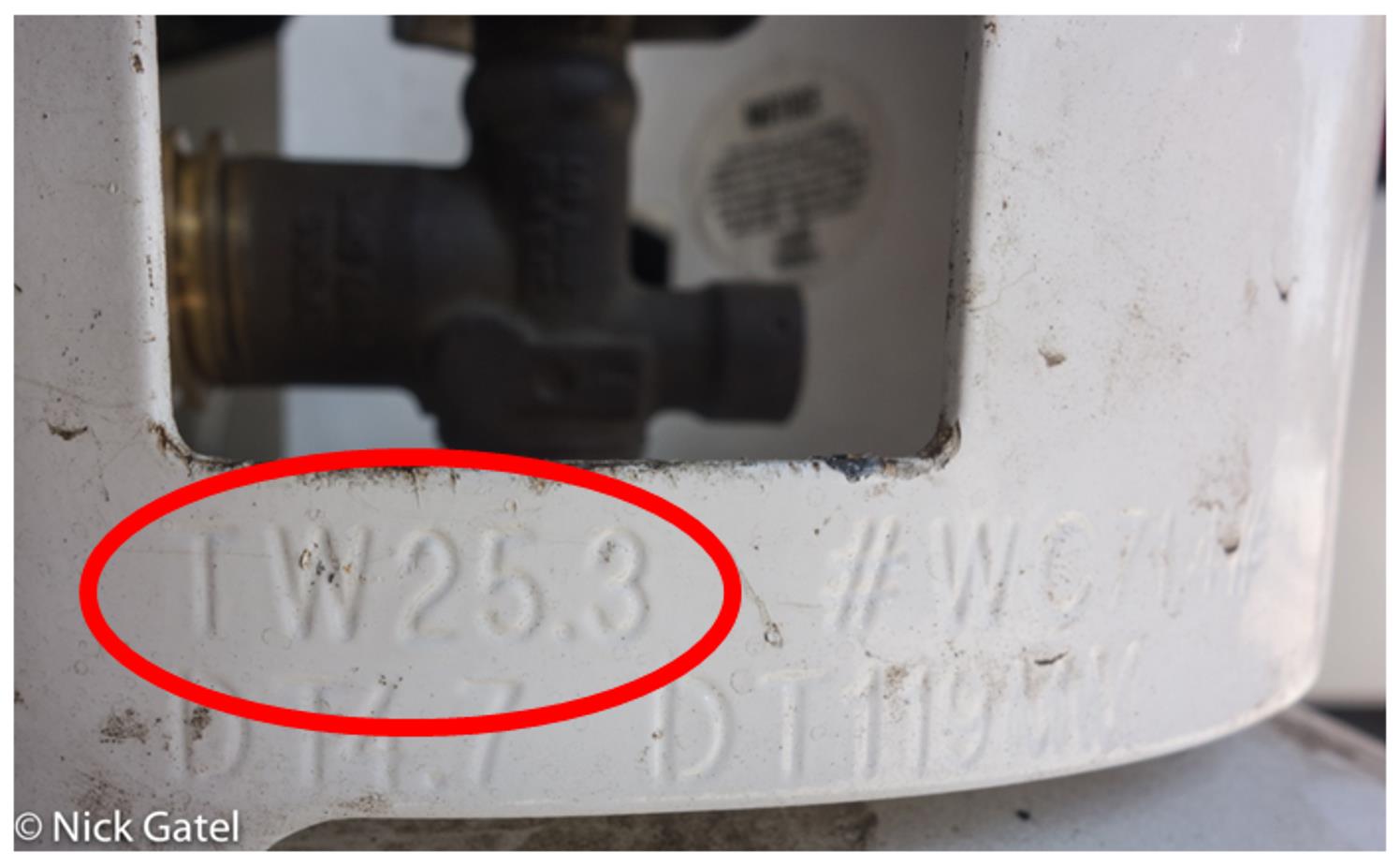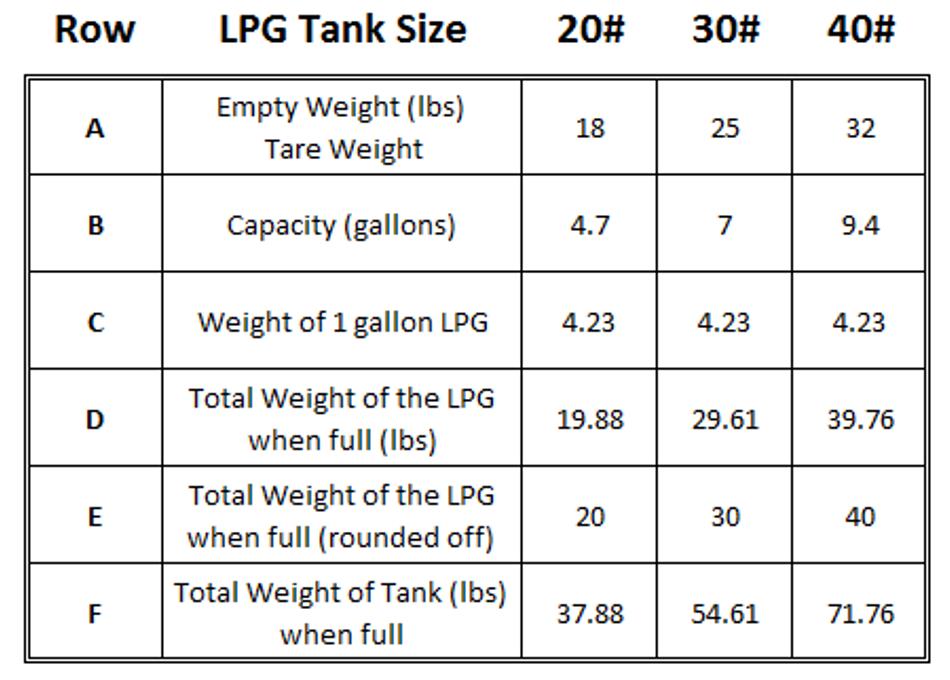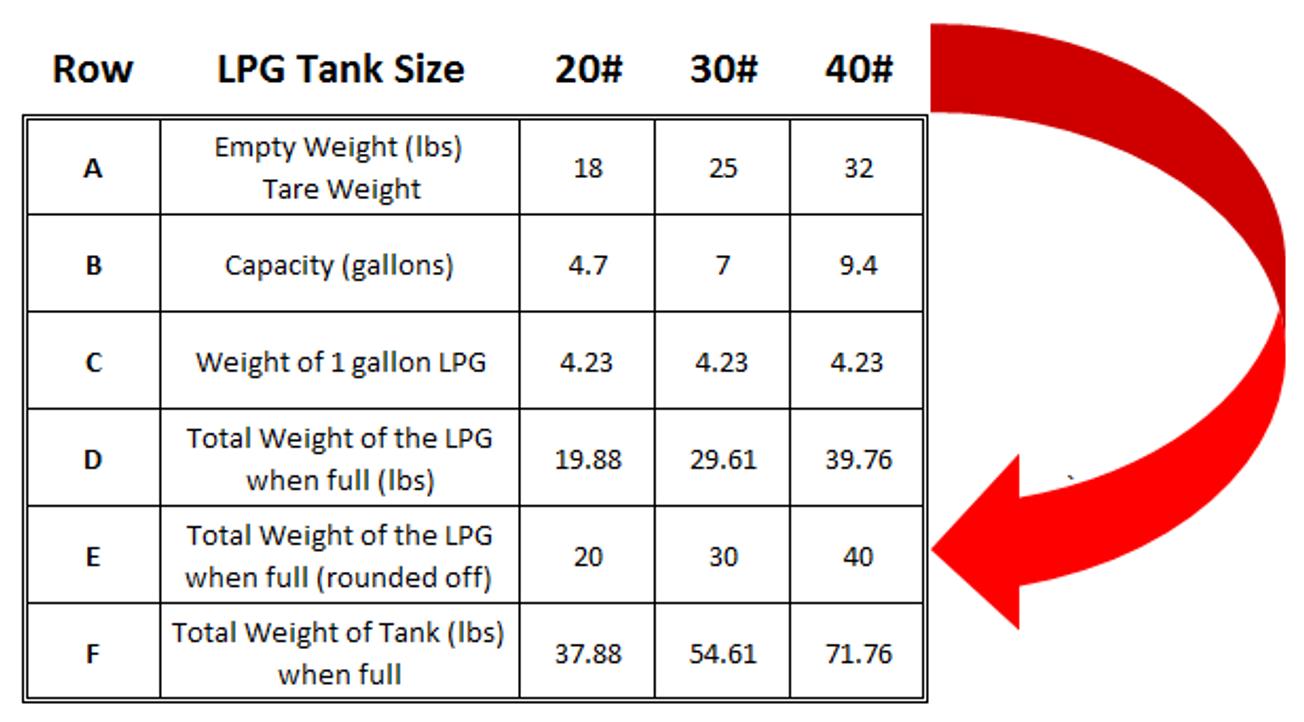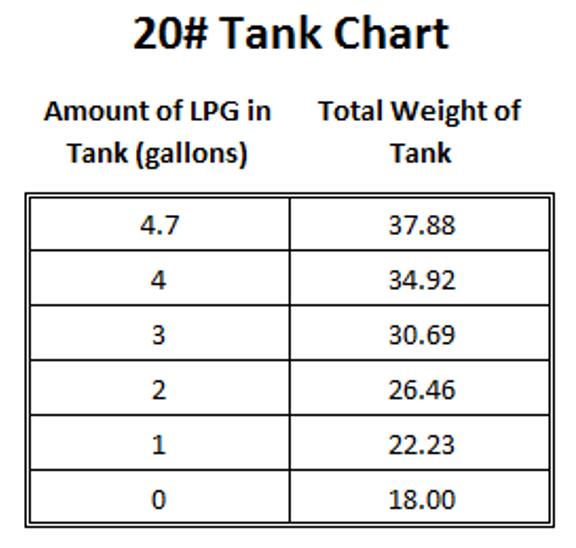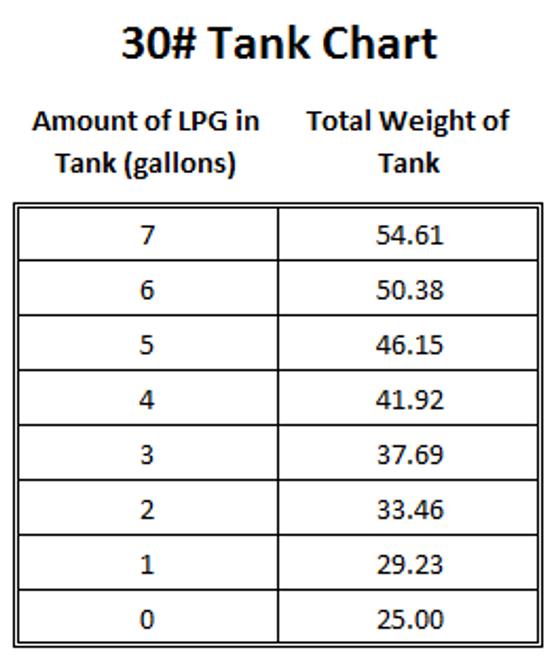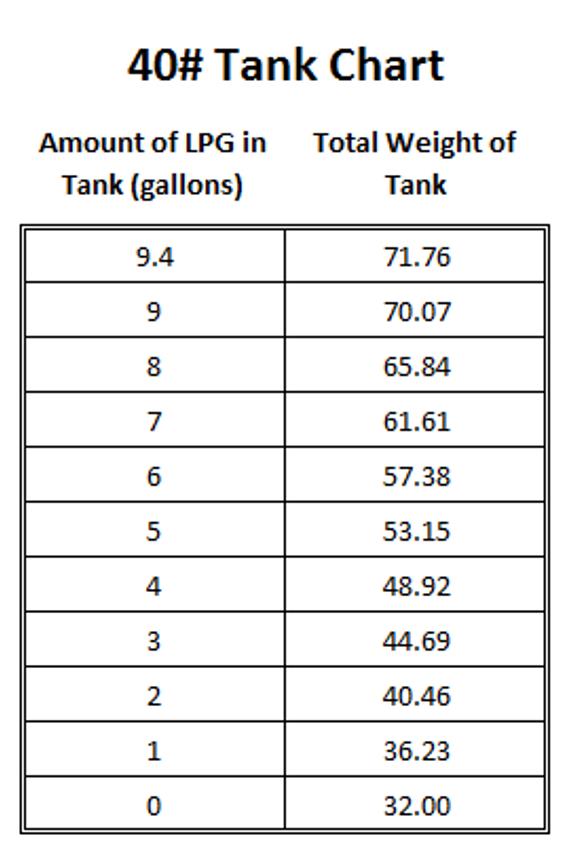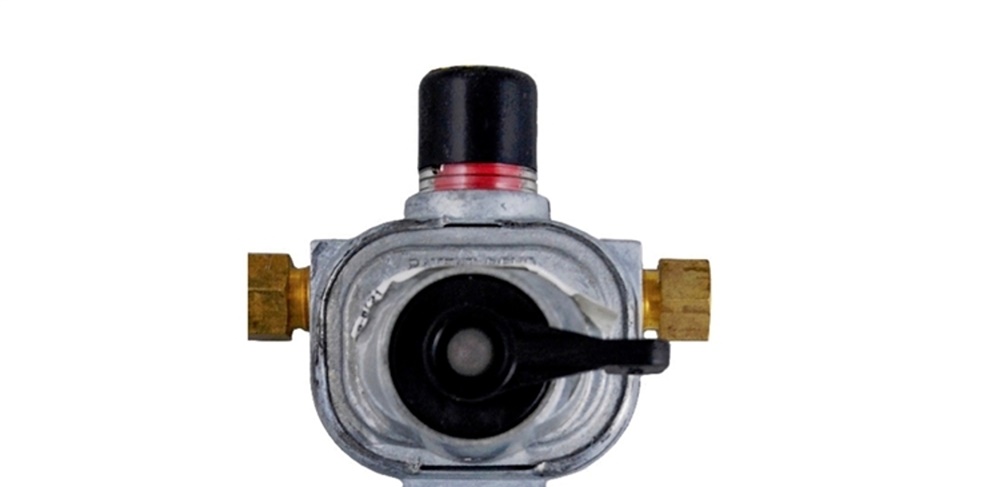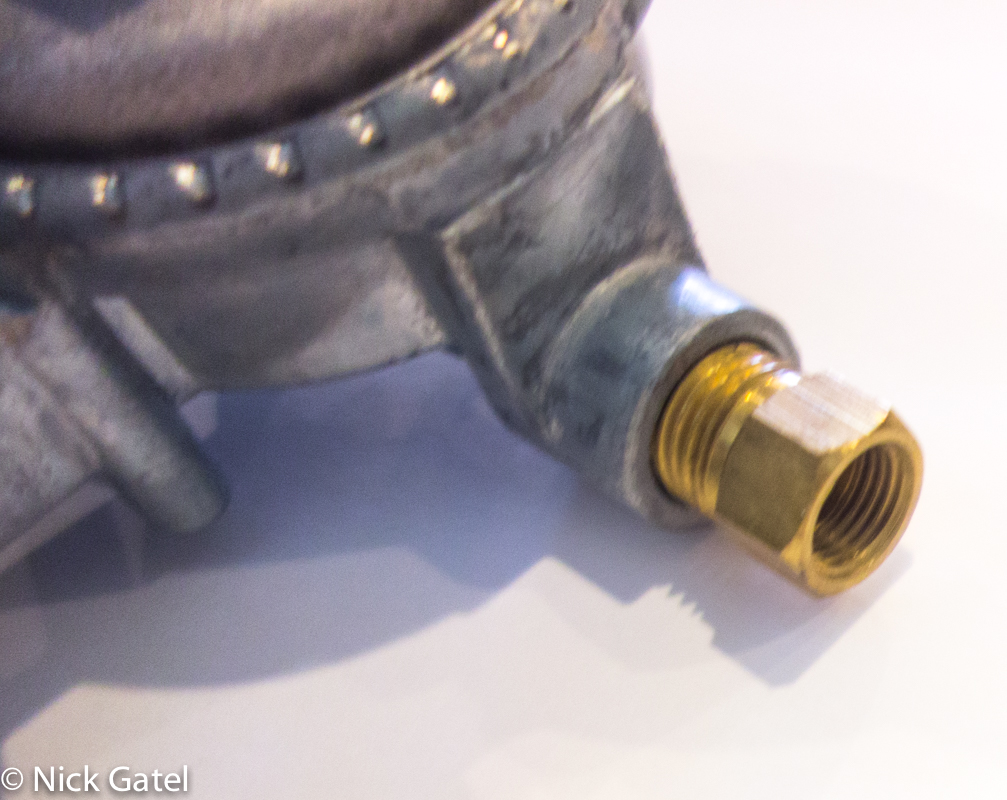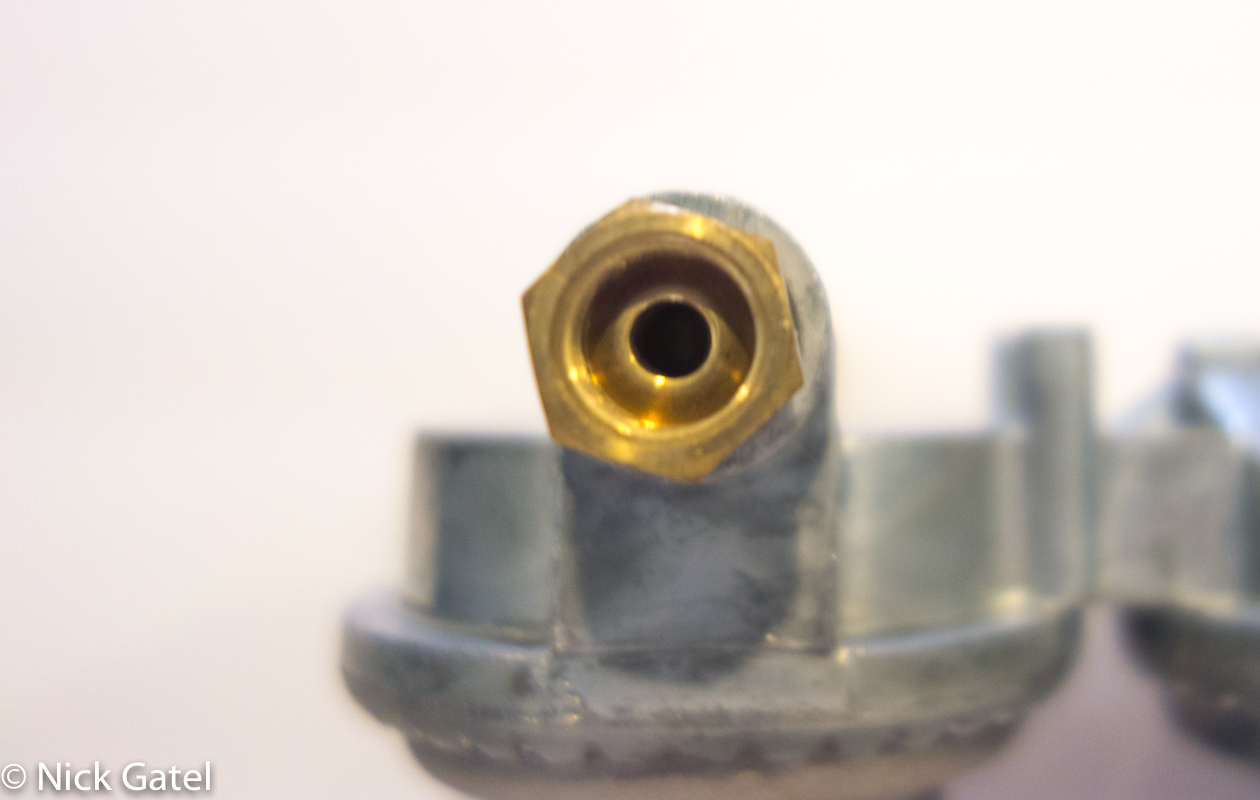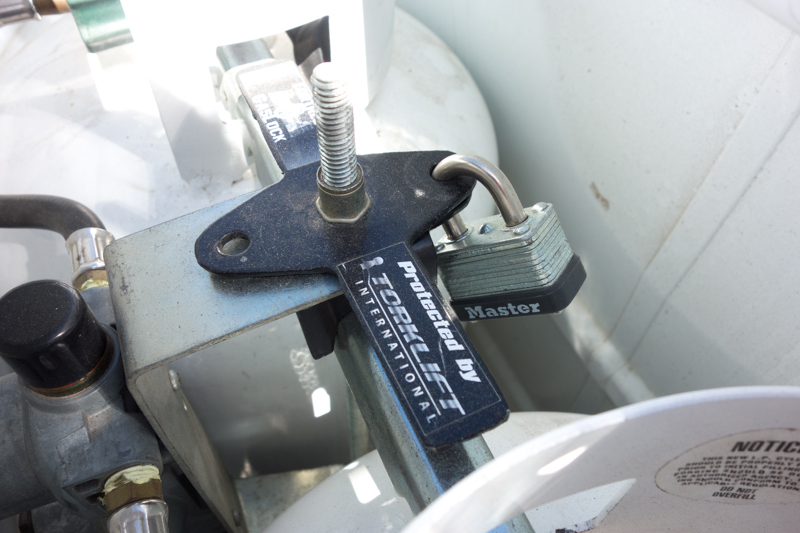Ah, it’s a common malady for some campers. Running out of propane on a camping trip is truly inconvenient – especially if it happens during the middle of a cold night and your furnace quits running.
Most portable propane tanks usually don’t have gauges. If they do, they don’t work well – probably better to say they don’t work at all. So what is one to do?
In the past 15 years we have run out of propane once, and this was with a camper that had two 40 # tanks. Patio BBQ’s usually are connected to 20# tanks and most campers use 30# tanks. How could I have run out of propane? Because I didn’t check how much propane was in the tanks during my trip pre-check.
You may wonder, if propane tanks don’t have gauges, how would one know how much is in the tanks. Easy, you weigh them. In this post I’ll go through some of the information needed to understand propane tanks, and then share some quick look-up tables I built just for you, the reader.
Also, since propane is also called liquefied petroleum gas or “LPG” for short, I’ll use LPG for the rest of the post.
LPG Tank Terminology
The most common tanks found on campers are 20 pound (20#), 30 pound (30#), and occasionally 40 pound (40#).
- 20# also commonly called 5 gallon tanks are used with most patio gas grills and smaller campers.
- 30# often called 7.5 gallon tanks are the most common size found on travel trailers.
- 40# are also called 10 gallon tanks.
Consider the 20# or 5 gallon tank. It doesn’t weigh 20 pounds and it doesn’t hold 5 gallons of LPG.
If we were to fill it to capacity with water, it would hold 5 gallons. But we can’t fill it to capacity with LPG, we need a little less for safety reasons and expansion of the gas in hot temperature, so the maximum LPG in a 20# tank is 4.7 gallons.
One gallon of LPG weighs 4.23 pounds. If we multiple the capacity of a 20# tank with the weight of a gallon of LPG, we come up with formula:
gallons X weight per gallon = weight of the LPG in the tank
4.7 gallons X 4.23 lbs per gallon = 19.88 pounds
4.7 X 4.23 = 19.88 pounds of LPG
Rounding 19.88 pounds = 20 pounds
The weight of the LPG in a full tank is 20 pounds, thus it is called a 20# tank.
The approximate weight of an empty LPG tanks is as follows:
- 20# is approximately 18lbs.
- 30# is approximately 25lbs.
- 40# is approximately 32lbs.
If we know the weight of an empty tank, and then weigh the tank, the total weight will tell us how much LPG is in the tank. A simple bathroom scale or a luggage style hanging scale is convenient and most people have one already.
This website may be compensated for linking to other sites for sales of products. As an Amazon Associate I earn a small fee from qualifying purchases at no additional cost to the purchaser.
Before you jump up and go weigh your tank, a couple things to consider. Is your scale accurate? How much does your empty tank really weigh?
(Updated 12/14/2023): I found a tank gauge solution that has worked well for use and is accurate. Click this link for my article on the Mopeka Tank Sensors
Tare Weight
Tare weight is the weight of an empty LPG tank. To know how much LPG is in a tank, we have to start by knowing how much it weighs empty. Tank weights vary a little between manufacturers and each manufacturer stamps the tare weight on the collar of the tank. Below is the tare weight (TW) of my 30# tank.
Earlier it was stated that a 30# tank weighs approximately 25lbs. As you can see in the picture above, my 30# tank actually weighs 25.3 pounds.
All of the discussion so far can be summarized in the table below:
LPG Tank Levels by Weight
Below are charts that you can use to determine how much LPG is in your 20, 30, or 40 pound tank.
Two Tanks or One?
Our ’92 Starcraft Meteorite, one of the smallest models of tent trailers, came with just one LPG tank. I upgraded it to a dual-tank system. Double LPG capacity.
Most places that sell LPG have a minimum charge that is equal to 5 gallons. Even if your 20# tank is empty, you will pay for 5 gallons and only get 4.7 gallons. But if you have two tanks, you can fill the empty one and top of the second if it isn’t completely full. It’s a winning situation.
But how do you know when the first tank is empty? Do you want to remove the tanks after every trip and weigh them? There is a better way – a LPG “change-over dual regulator with indicator.”
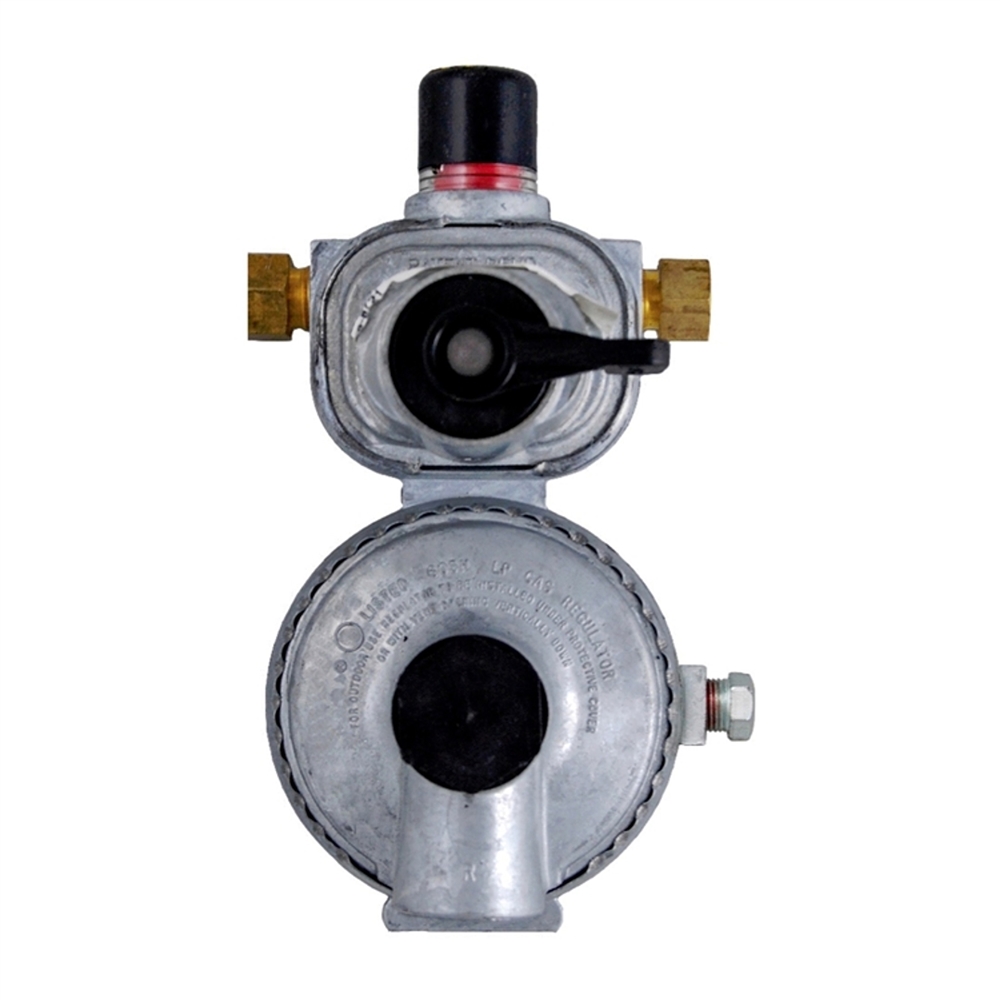
How this works is the regulator uses LPG from one tank. When that tank is empty, it automatically switches to the second tank and the red indicator alerts the owner that the first tank is empty. If the owner just wants to fill the empty tank, it can be removed and the regulator will still supply LPG to the camper’s gas system. I have used them on all my campers.
Regulators, Hoses, and Fittings
Take a look at the regulator above. A brass fitting is connected to the regulator body and then the “pig-tail” hose is connected to the fitting. The threads to the regulator are not the same size as the fitting for the hose. This normally wouldn’t be a problem, if everything was standardized – they are not!
1/4 inch NPT
The original regulators that came with my last two campers where not auto change-over, nor did they have an indicator. And to save money, the pig-tail hoses were connected directly to the regulator – no brass fitting. If you have one of these systems, and want to upgrade the regulator, your old hoses probably won’t work. What to do? And what size will you need if want to keep your old hoses? Can you keep your old hoses? Yes, you can, but it is just best to buy new hoses with the new regulator.
So here’s what you need to know. The hose will fit directly into the body of a regular if there are no brass fittings in the regulator.
Below is a picture of our Milan’s regulator. Notice that the hoses are connected directly into the regulator.
These hoses are 5 years old and starting to get brittle, so I recently bought new ones. The new ones are an “upgrade” being covered with braided steel.
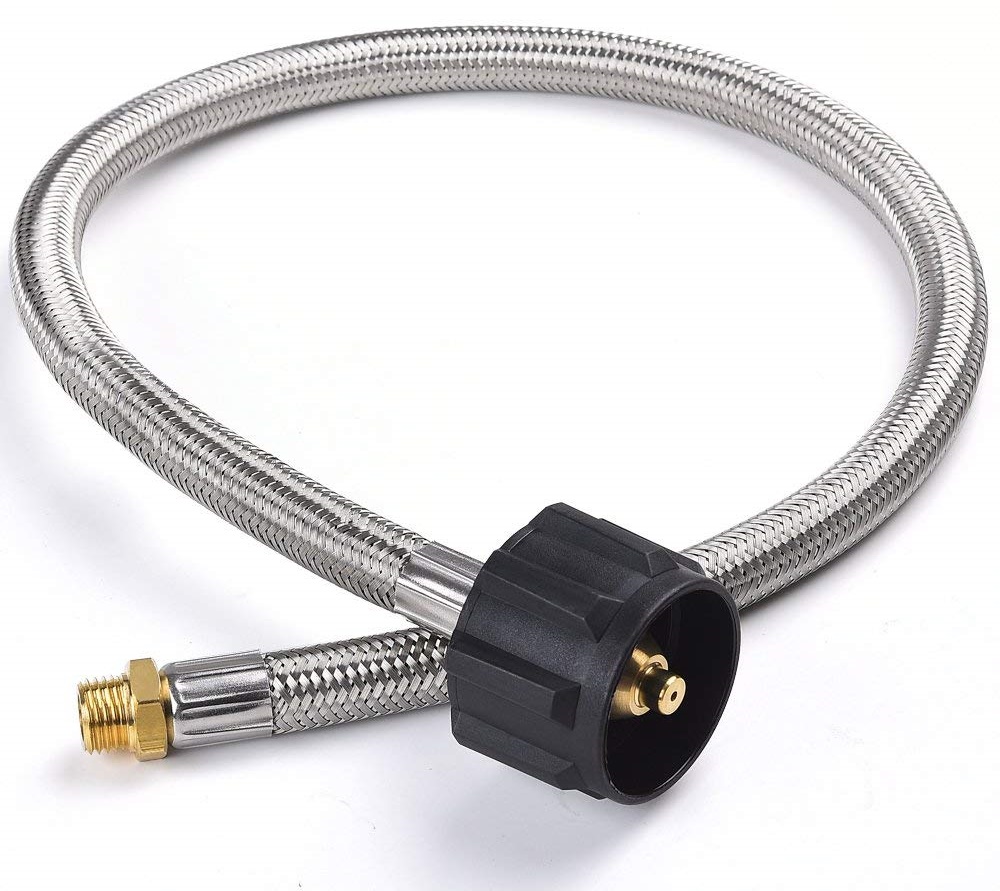
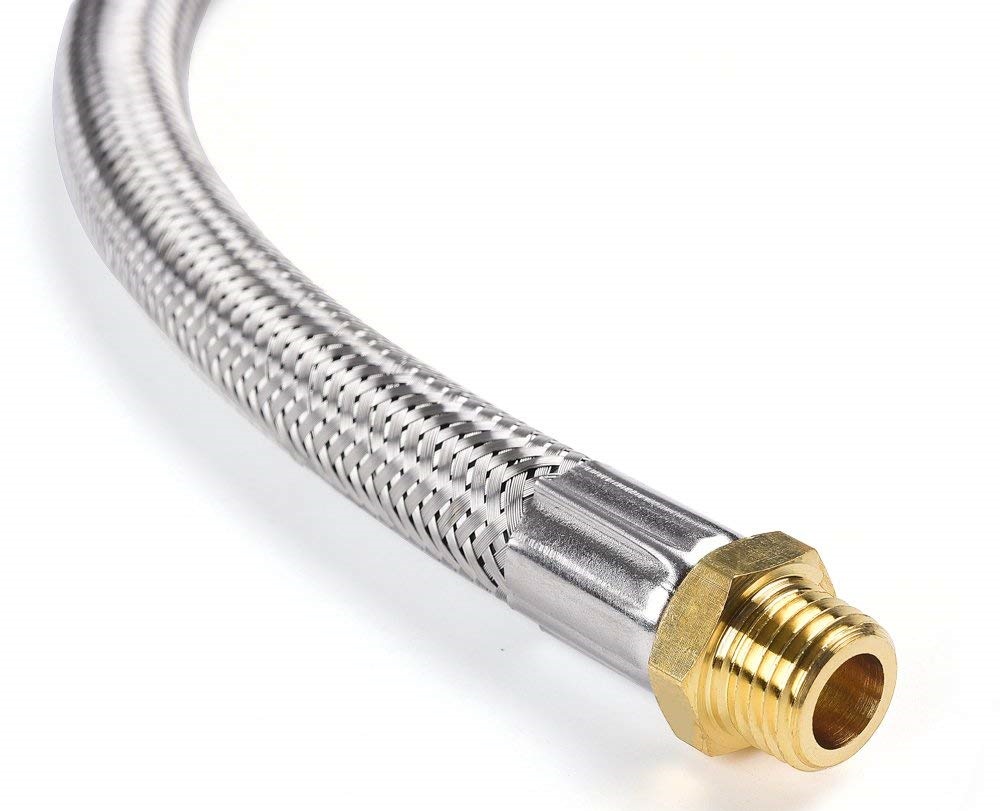
The fitting size is 1/4 inch NPT
When I replaced the regulator on our 2014 Milan, the old regulator and hoses were brand new. No need to purchase new hoses, when I already had new hoses. But all the easily available regulators had the brass fittings.
These brass fittings are NOT easily removed. I don’t know what was used, but it must have been some sort of epoxy. Removing them was difficult and there was a very good chance that the regulator could have been damaged in the process, rendering the regulator useless. Carefully and with much patience, I succeeded.
1/4 Inch Inverted Male Flare
If you want to buy a new regulator that has the brass fittings and new hoses then you need to purchase matching pieces. Below are a couple close-up pictures of the brass fitting.
The hoses you need to fit the brass fittings are shown below:
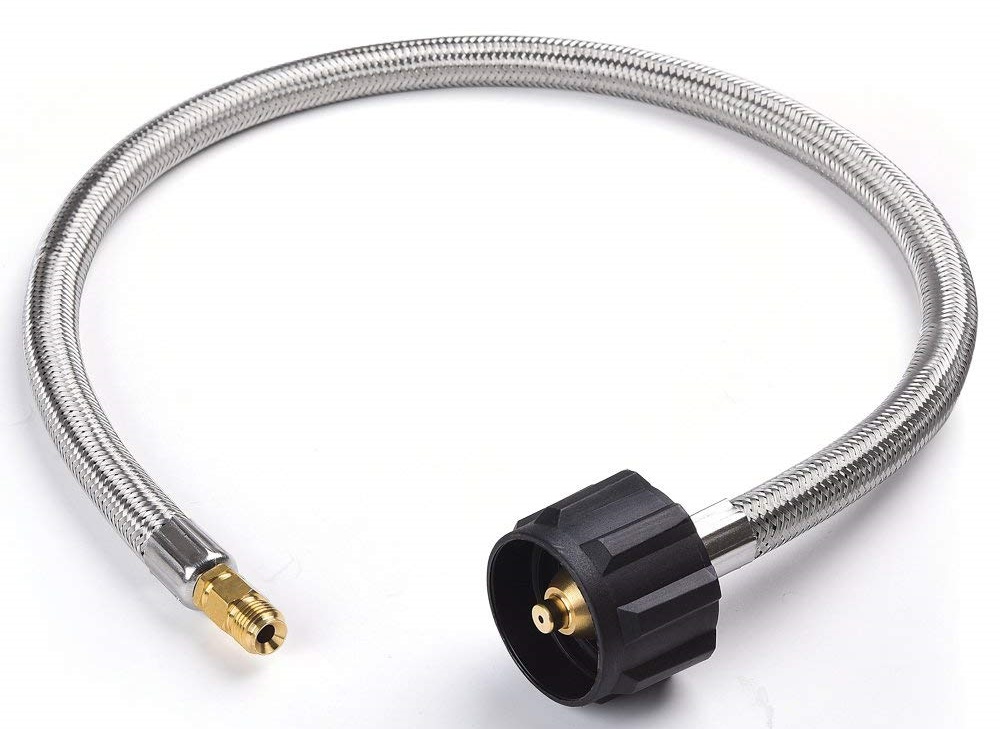
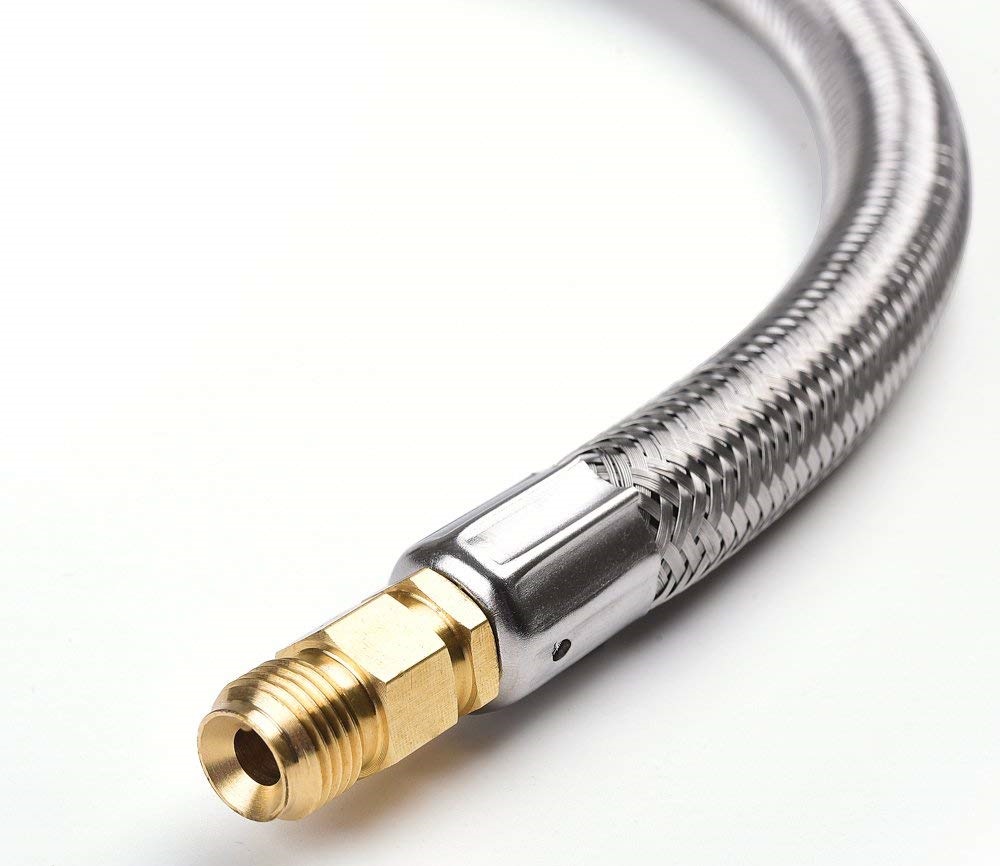
The size is 1/4 Inch Inverted Male Flare
Lock it Up
While you’re doing this change over you might want to consider adding a tank lock as deterrent to thieves. I reviewed the Torklift Propane Gas Lock in this post.
(Update 12/14/2023): Well, the TorkLift lock didn’t work as I shared in this post. Last year I resisted the propane security issue (our loss cost a bunch of money) and came up with this solution I have great confidence in.
Avoid Leaks!!
Flare Fittings
Any time you are connecting flare fittings you do not want to use any type pipe thread sealant or tape.
Pipe Fittings
Any time you are connecting threaded pipe fittings, you want to use thread sealant or tape, AND YOU WANT TO USE PRODUCTS DESIGNED FOR LPG. White Teflon tape is not what you want!!



